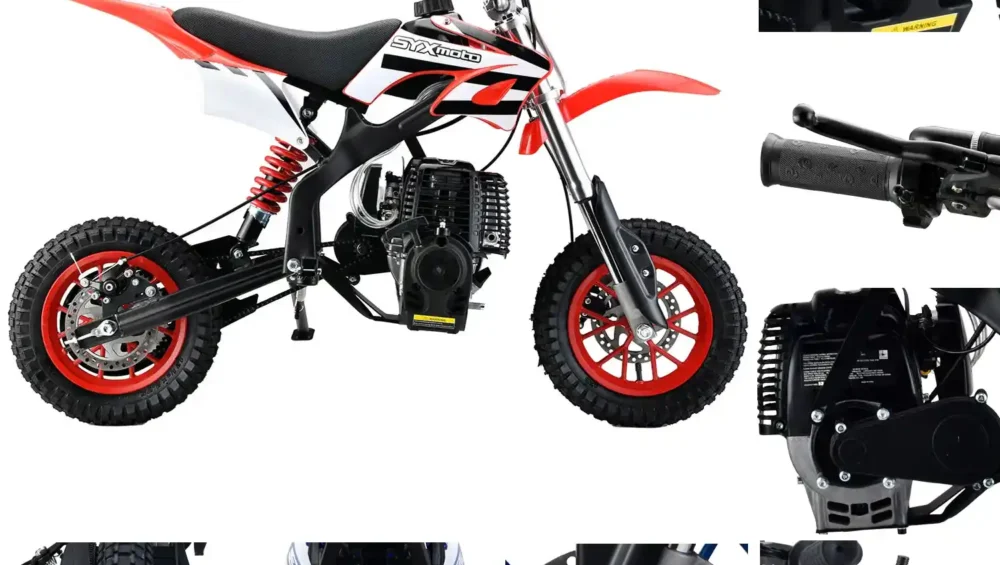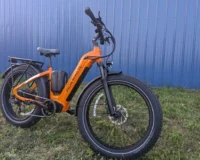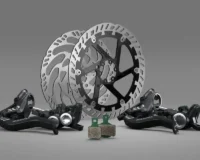🧰 How to Maintain Your Gas Dirt Bike Engine for Peak Performance
A well‑maintained gas dirt bike engine can make the difference between a smooth power run and a frustrating day on the trail. Whether you ride on weekends or race competitively, understanding proper gas dirt bike maintenance ensures your engine stays strong, reliable, and efficient.
In this guide, you’ll learn step‑by‑step how to take care of your gas dirt bike engine — from cleaning the air filter to checking spark plugs and managing oil changes. By the end, you’ll know exactly how to keep your ride ready for any adventure.
🏁 Why Gas Dirt Bike Maintenance Matters
Your gas dirt bike’s engine is exposed to dust, mud, and heat every time you ride. Without regular maintenance, dirt buildup and old oil can destroy your bike’s performance — or worse, lead to expensive repairs.
Proper maintenance of a gas dirt bike engine helps you:
- Extend engine life
- Maintain consistent throttle response
- Prevent costly breakdowns
- Improve fuel efficiency
- Keep your ride looking and sounding new
💡 Think of engine care as protecting your investment. Spend a few minutes after each ride, and your bike could last years longer.
⚙️ Understanding How a Gas Dirt Bike Engine Works
Before you grab the tools, let’s look at the basics.
Most gas dirt bikes use either a two‑stroke or four‑stroke engine.
| Type | Features | Maintenance Level |
|---|---|---|
| Two‑Stroke | Lightweight, higher RPM, oil mixed with fuel | Easier but more frequent |
| Four‑Stroke | Separate oil system, smoother power delivery | More complex but less frequent |
Knowing which type you have helps you tailor your maintenance routine. Four‑strokes tend to need more oil and valve adjustments, while two‑strokes demand regular top‑end inspection.
🛠️ Step‑by‑Step Gas Dirt Bike Maintenance Guide
Let’s dig into the practical steps you should perform after specific riding intervals.
🔹 1. Clean or Replace the Air Filter (After Every Ride)
Your air filter is your engine’s first line of defense. Dirt and dust can quickly clog it — especially on off‑road tracks or trails.
Tools Needed:
- Air filter cleaner
- Air filter oil
- Gloves
Steps:
- Remove the seat and take out the air filter.
- Inspect it for dirt or tears.
- Wash with air filter cleaner or dish soap in warm water.
- Let it dry completely.
- Apply filter oil evenly (to trap fine dust particles).
- Reinstall and make sure the seal fits tightly.
🚨 Never ride with a dirty or dry air filter — it allows grit into the engine, wearing down pistons and cylinders fast.
Frequency: After every 1–2 rides, depending on terrain.
🔹 2. Change the Engine Oil (Every 5–10 Hours of Riding)
Old oil breaks down, losing its lubrication quality. Regular oil changes help keep friction low and prevent engine damage.
Steps:
- Warm up the bike for 3–5 minutes to thin the oil.
- Remove the oil drain bolt and drain old oil into a pan.
- Replace or clean the oil filter (if applicable).
- Pour in new high‑quality four‑stroke engine oil (check your manual for quantity).
- Tighten all bolts and check for leaks.
🧴 Pro Tip: Use a motorcycle‑specific oil designed for high RPM engines. Avoid automotive oils that may contain additives harmful to wet clutches.
Frequency: Every 10 hours for regular riding; more often for racing.
🔹 3. Inspect and Replace the Spark Plug
A fouled or worn spark plug is a common cause of misfires. Check the spark plug regularly to ensure strong ignition.
Steps:
- Remove the spark plug cap and unscrew the plug with a socket wrench.
- Inspect the tip for carbon buildup or oil residue.
- Check the electrode gap (refer to your manual).
- Clean or replace if discolored or corroded.
- Reinstall and tighten securely.
Frequency: Every 15–20 hours of riding.
⚡ A clean spark plug ensures reliable starts and smoother power delivery.
🔹 4. Keep the Cooling System in Check
Your gas dirt bike engine generates significant heat — especially during long rides. An efficient cooling system prevents overheating.
What to Check:
- Coolant levels (should be near the filler neck)
- Radiator fins (clean and undamaged)
- Hoses (tight connections, no leaks)
Top up with a quality coolant designed for motorcycles, and inspect the radiator cap seal to prevent loss of pressure.
Frequency: Every 10 hours or monthly.
🔹 5. Lubricate and Adjust the Chain
Your drive chain transfers all that engine power to the rear wheel. Dirt and water can wear it out if you don’t maintain it.
Steps:
- Clean with a chain brush and degreaser.
- Dry completely and apply chain lube.
- Adjust slack (roughly 1–1.5 inches of movement).
- Ensure alignment with rear sprocket.
Frequency: Every ride or after mud exposure.
🔗 A smooth chain reduces friction, which translates to better acceleration and fuel efficiency.
🔹 6. Valve Clearance Inspection (Four‑Stroke Only)
Valve clearance ensures the correct amount of air and fuel enters the engine. Improper clearance can cause hard starting and reduced power.
Because this job requires precision, you might consult a professional mechanic unless you’re comfortable handling feeler gauges and torque specs.
Frequency: Every 25–30 hours or as per manufacturer’s manual.
🔹 7. Clean the Carburetor or Fuel System
Fuel residue and dirt often clog the jets in your carburetor. This leads to uneven idling or throttle hesitation.
Maintenance Tips:
- Drain the carburetor float bowl after muddy or wet rides.
- Use fresh, ethanol‑free fuel.
- Run a fuel stabilizer when storing your bike.
Frequency: Every 20 hours or monthly.
🔹 8. Check the Exhaust System
Mud and water can get trapped in the exhaust, impacting performance and sound.
Quick Tips:
- Ensure your exhaust pipe is firmly attached.
- Clean out any mud or carbon deposits.
- Replace damaged gaskets to prevent air leaks.
Frequency: Inspect monthly or after rough trail rides.
🔹 9. Inspect Bolts, Cables, and Controls
Vibration can loosen bolts and cables. Regular checks prevent sudden mechanical surprises mid‑ride.
Checklist:
- Tighten engine mounts, exhaust bolts, and frame bolts.
- Check clutch cable tension.
- Inspect throttle and clutch for smooth operation.
Frequency: Weekly or before every ride.
🔹 10. Post‑Ride Engine Cooling and Cleaning Routine
After your ride:
- Let the engine cool naturally (avoid spraying water on a hot engine).
- Use mild soap and water to clean mud and grime.
- Dry completely before storage.
- Spray anti‑corrosion lubricant on external engine parts.
Keeping your gas dirt bike engine clean not only looks great but deters rust and corrosion.
🧠 Bonus: Seasonal Gas Dirt Bike Maintenance Tips
If you store your bike for the off‑season, follow these quick long‑term maintenance steps:
- Switch off the fuel and drain the carburetor.
- Add a fuel stabilizer to prevent clogging.
- Change oil and clean air filter before storage.
- Remove the battery (store it in a dry, warm place).
- Lubricate moving parts (chain, levers, and cables).
🏍️ A little preparation keeps your dirt bike ready for the next ride — no engine trouble, no sticky carburetors.
⚡ Common Gas Dirt Bike Engine Mistakes to Avoid
Many riders unknowingly shorten their engine lifespan with these habits:
- Ignoring regular oil changes
- Riding with dirty air filters
- Using car oil instead of motorcycle oil
- Over‑revving cold engines
- Neglecting chain lubrication
- Forgetting to check spark plugs
Avoid them, and you’ll keep your gas dirt bike engine performing at peak power for years.
🧩 Troubleshooting Common Engine Issues
| Symptom | Possible Cause | Quick Fix |
|---|---|---|
| Engine won’t start | Fouled plug, no fuel flow, dirty carb | Clean or replace plug; check fuel |
| Weak power output | Air filter clogged, valve issues | Clean filter; inspect valves |
| Overheating | Low coolant, dirty radiator | Refill coolant; clean fins |
| Rough idling | Carburetor jet clogged | Perform carb cleaning |
| Excessive smoke | Too much oil in mix (2‑stroke) | Correct oil/fuel ratio |
🧠 Expert Tips to Extend Engine Life
- Warm up your bike before riding — gives oil time to circulate.
- Use high‑octane fuel for better combustion.
- Follow manufacturer intervals strictly.
- Keep records of all your maintenance tasks (helps resale value).
- Check gasket seals if you ever see oil leakage.
🧰 Consistency is more important than skill. Even small maintenance routines drastically extend your bike’s longevity.
⚙️ Recommended Tools for Gas Dirt Bike Maintenance
Having the right tools saves hours of frustration.
Here’s a basic set you should own:
- Socket wrench set
- Feeler gauge
- Oil pan and funnel
- Chain brush & lube
- Air filter oil and cleaner
- Spark plug wrench
- Torque wrench
- Motorcycle stand
Keep these essentials handy in your garage or van.
🛒 Related Products & Guides
- Shop Gas Dirt Bikes
- Gas Dirt Bike Guide
- Best 125cc Gas Dirt Bikes for Beginners
- Gas vs Electric Dirt Bike Comparison
🧭 Final Thoughts: Master Your Gas Dirt Bike Maintenance Routine
Your gas dirt bike is more than a machine — it’s a companion built for adventure. Regular gas dirt bike maintenance isn’t just about preventing damage; it’s about getting consistent performance every time you hit the throttle.
By maintaining your engine properly — cleaning air filters, checking spark plugs, changing oil regularly, and inspecting valves — you ensure your dirt bike stays responsive, fast, and dependable for years.
Ride hard, maintain smart — and your gas dirt bike engine will reward you with endless trails of pure thrill.







